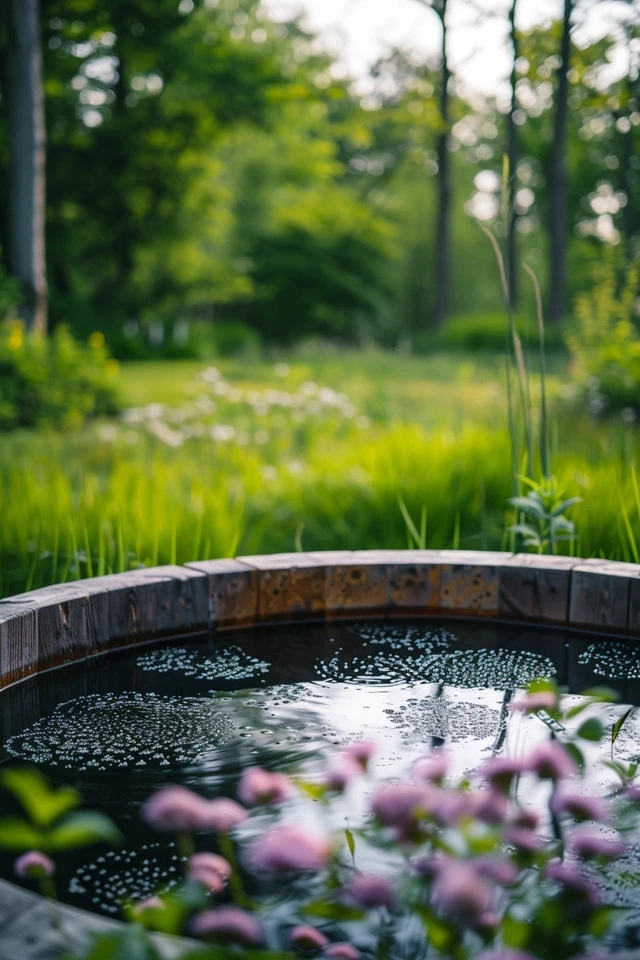Greetings! In this article, I will guide you through the process of cleaning out a natural spring and exploring various purification methods to ensure clean water for your household. Whether you’re embarking on a new spring development project or looking to improve the water quality of an existing spring, understanding the necessary steps and techniques is crucial for maintaining a safe and reliable water source.
When it comes to natural spring cleaning, it’s important to assess the reliability of the spring’s flow throughout the year. Fluctuating flow rates can be an indication of potential contamination, so monitoring and analyzing the flow rate is essential. Additionally, conducting water quality analysis will help determine the appropriate treatment methods to ensure clean and safe drinking water.
Now, let’s explore some of the key considerations for spring development and the different purification methods available for a natural spring. By understanding these aspects, you’ll be equipped with the knowledge to make informed decisions in maintaining a sustainable and eco-friendly water supply.
Key Takeaways:
- Assess the reliability of the spring’s flow to identify potential contamination risks.
- Conduct water quality analysis to determine the necessary treatment methods.
- Monitor the flow rate and understand the water needs of your household.
- Developing a spring involves collecting the discharged water and running it into a sanitary storage tank.
- Purification methods include boiling, filtration, distillation, and chlorination.
By following these guidelines and utilizing the appropriate purification methods, you can ensure that your natural spring provides clean and healthy water for you and your loved ones. So, let’s dive into the details and discover how to clean out a natural spring and implement effective purification techniques!

Spring Development Considerations
When developing a spring as a water supply, it is crucial to prioritize the maintenance of natural springs and implement eco-friendly water cleaning methods. The treatment of spring water is essential to ensure its safety for consumption.
One important consideration is maintaining the reliability of the spring’s flow throughout the year, with a minimum flow rate of 2 gallons per minute. This ensures a consistent supply of fresh water for your household’s needs.
To determine the necessary spring water treatment, it is advisable to test the water quality through analysis at a certified laboratory. This will help identify any potential contaminants and select appropriate methods to purify the water.
During the spring development process, it is necessary to collect the discharged water using tile or pipe and direct it into a sanitary storage tank. This allows for proper storage and distribution of the treated spring water.
Moreover, protecting the spring from surface contamination is essential. By taking measures to prevent pollutants from entering the spring, you can ensure the cleanliness and purity of the water supply.
Remember, utilizing eco-friendly water cleaning methods and maintaining the natural integrity of the spring are key factors in achieving sustainable and safe water sources.
Let’s move on to explore the various purification methods available for cleaning out a natural spring in the next section.

Purification Methods
When it comes to cleaning out a natural spring, there are various purification methods available to ensure the best spring water purification and natural spring sanitation.
Boiling Water
Boiling water is an effective and affordable method for purifying natural spring water. By bringing the water to a rolling boil for at least one minute, you can kill disease-causing organisms and make the water safe for consumption.
Filtration
Filtration, using multimedia filters, is another effective method for spring water purification. This method removes both large and small contaminants, ensuring clean and clear water. It is important to choose filters that are specifically designed for water purification and replace them regularly to maintain effectiveness.
Distillation
Distillation is a method that uses heat to collect vapor and condense it into purified liquid water. This process removes impurities such as minerals, heavy metals, and chemicals, leaving behind clean and purified water.
Chlorination
Chlorination is a commonly used method for water purification, including natural spring sanitation. By adding chlorine to the water, the method effectively kills germs and parasites that may be present in the ground or tap water. It is important to follow recommended guidelines for chlorine dosage to ensure safe and drinkable water.
Each purification method has its own advantages and disadvantages, and the choice will depend on factors such as cost, effectiveness, and availability. It is essential to assess the specific needs and requirements of your natural spring to determine the best purification method for achieving the highest level of cleanliness and safety.

Conclusion
Ensuring a safe and reliable source of clean water requires the proper cleaning and purification of natural springs. By carefully considering factors such as flow rate, water quality, and contamination prevention, we can develop and maintain natural springs as sustainable water supplies.
There are multiple effective water purification methods available for spring water cleaning. Boiling water is an affordable and accessible option that eliminates disease-causing organisms. Filtration, using multimedia filters, removes both large and small contaminants, while distillation collects vapor and condenses it into purified liquid water. Chlorination, a common method, effectively kills germs and parasites found in ground or tap water.
When choosing a purification method, consider factors such as cost, effectiveness, and environmental impact. The goal is to provide clean and healthy water for you and your household. Whether you opt for boiling, filtration, distillation, or chlorination, the objective remains the same: to ensure the safety and purity of your spring water.

